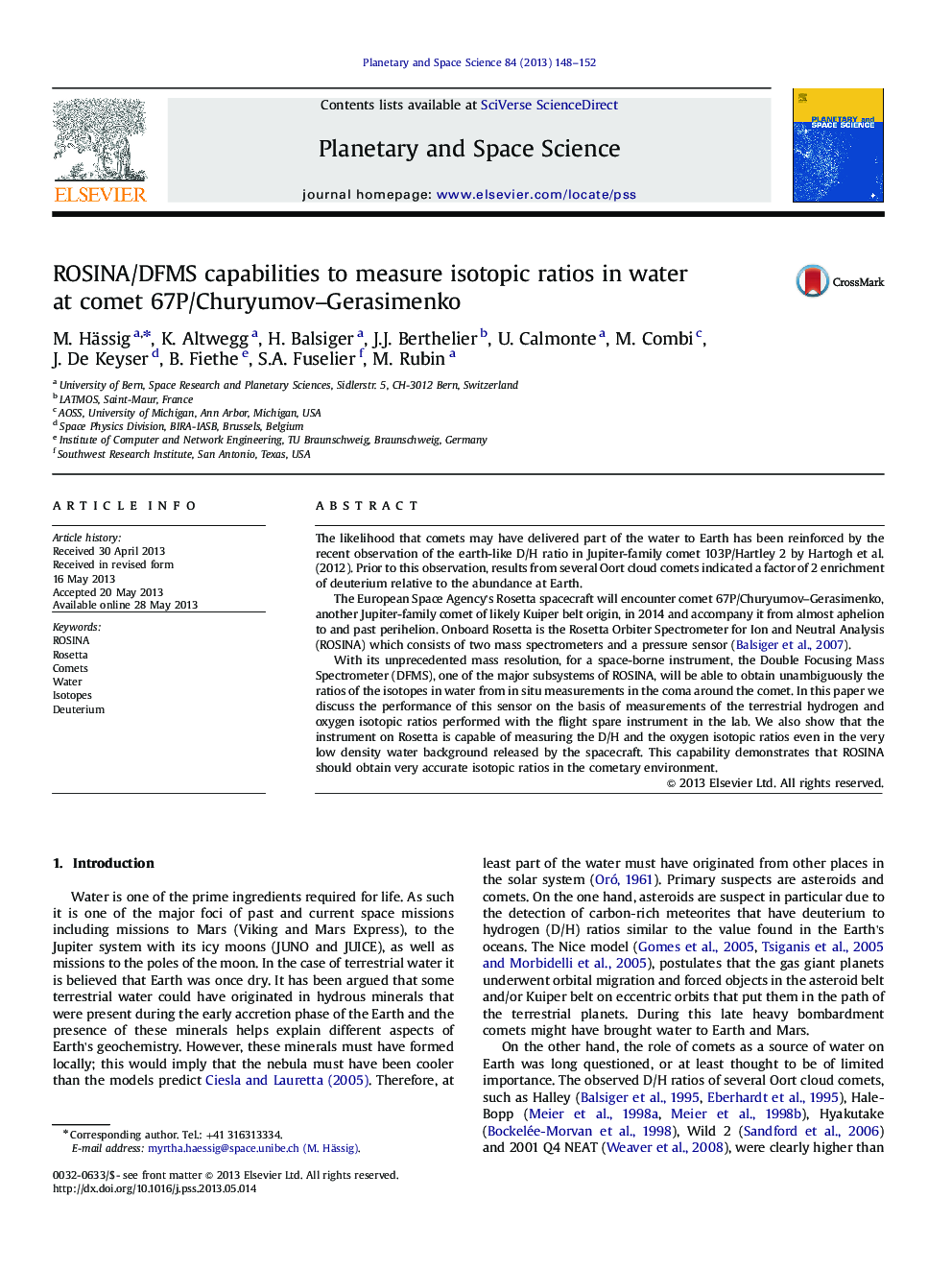| کد مقاله | کد نشریه | سال انتشار | مقاله انگلیسی | نسخه تمام متن |
|---|---|---|---|---|
| 1781320 | 1523952 | 2013 | 5 صفحه PDF | دانلود رایگان |

• DFMS capabilities to determine all isotopic ratios in water independently at 67P.
• Measurement of rare isotopic ratios such as HD18O/H2O.
• D/H ratio in water of the surrounding cloud of the Rosetta SC, due to outgassing.
The likelihood that comets may have delivered part of the water to Earth has been reinforced by the recent observation of the earth-like D/H ratio in Jupiter-family comet 103P/Hartley 2 by Hartogh et al. (2012). Prior to this observation, results from several Oort cloud comets indicated a factor of 2 enrichment of deuterium relative to the abundance at Earth.The European Space Agency's Rosetta spacecraft will encounter comet 67P/Churyumov–Gerasimenko, another Jupiter-family comet of likely Kuiper belt origin, in 2014 and accompany it from almost aphelion to and past perihelion. Onboard Rosetta is the Rosetta Orbiter Spectrometer for Ion and Neutral Analysis (ROSINA) which consists of two mass spectrometers and a pressure sensor (Balsiger et al., 2007).With its unprecedented mass resolution, for a space-borne instrument, the Double Focusing Mass Spectrometer (DFMS), one of the major subsystems of ROSINA, will be able to obtain unambiguously the ratios of the isotopes in water from in situ measurements in the coma around the comet. In this paper we discuss the performance of this sensor on the basis of measurements of the terrestrial hydrogen and oxygen isotopic ratios performed with the flight spare instrument in the lab. We also show that the instrument on Rosetta is capable of measuring the D/H and the oxygen isotopic ratios even in the very low density water background released by the spacecraft. This capability demonstrates that ROSINA should obtain very accurate isotopic ratios in the cometary environment.
Journal: Planetary and Space Science - Volume 84, August 2013, Pages 148–152